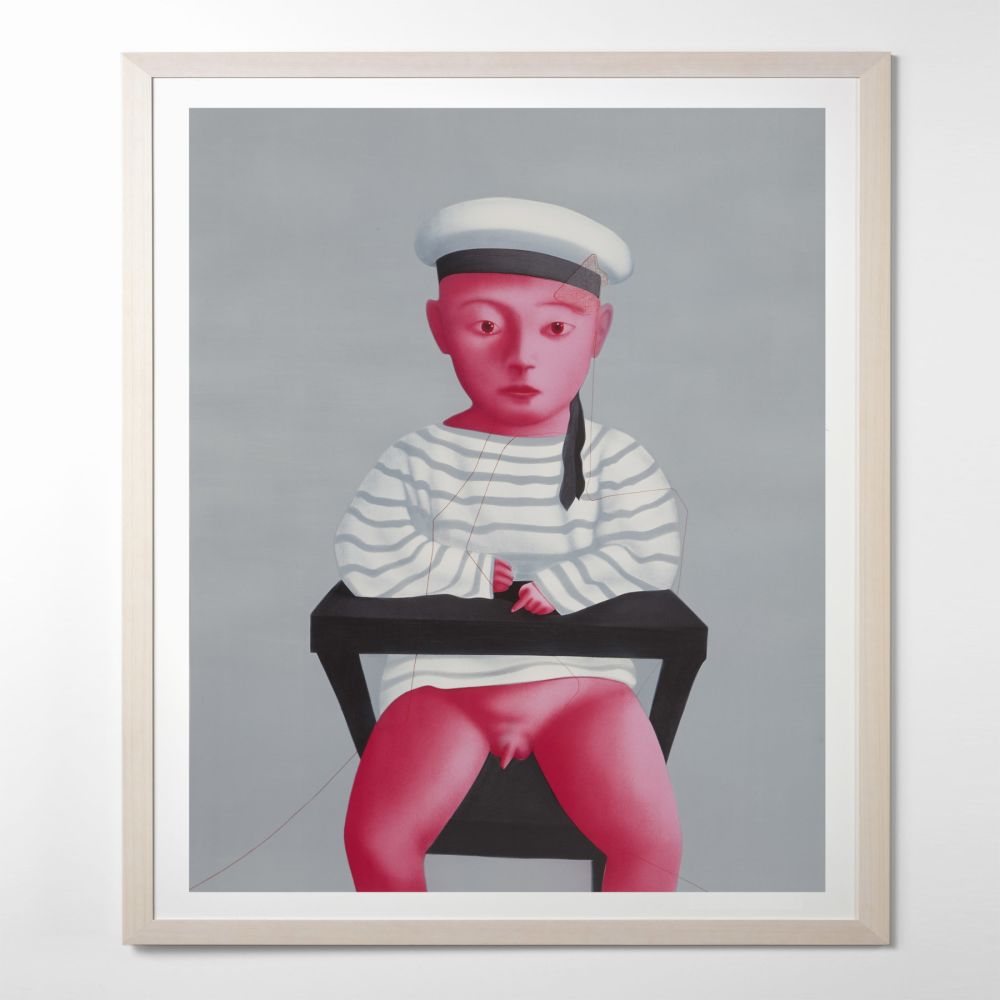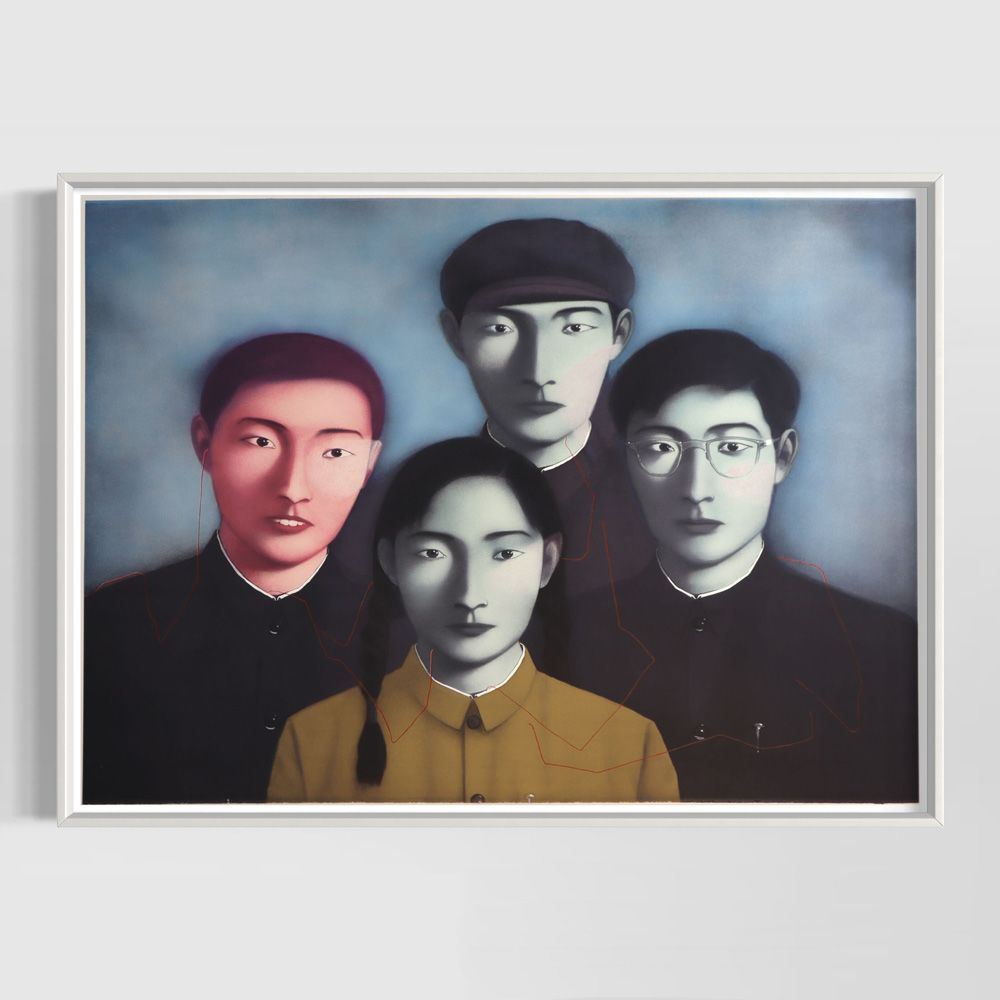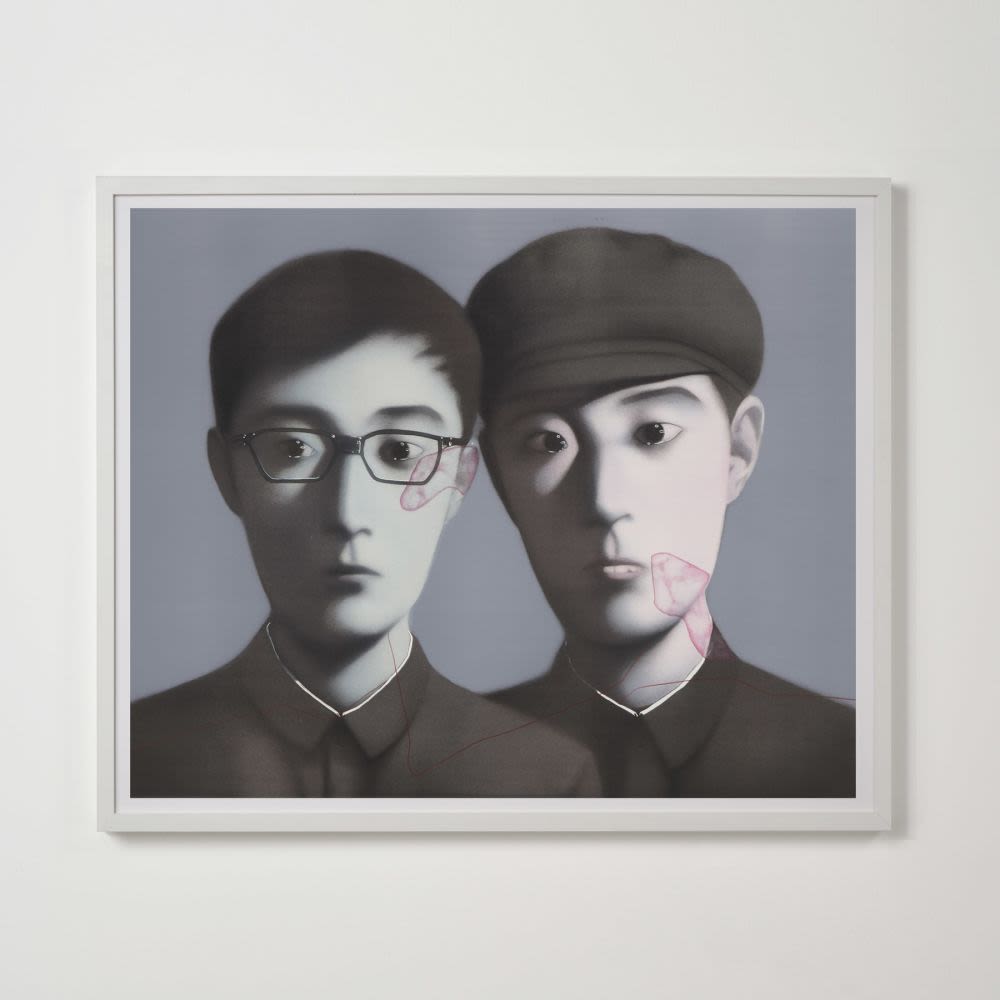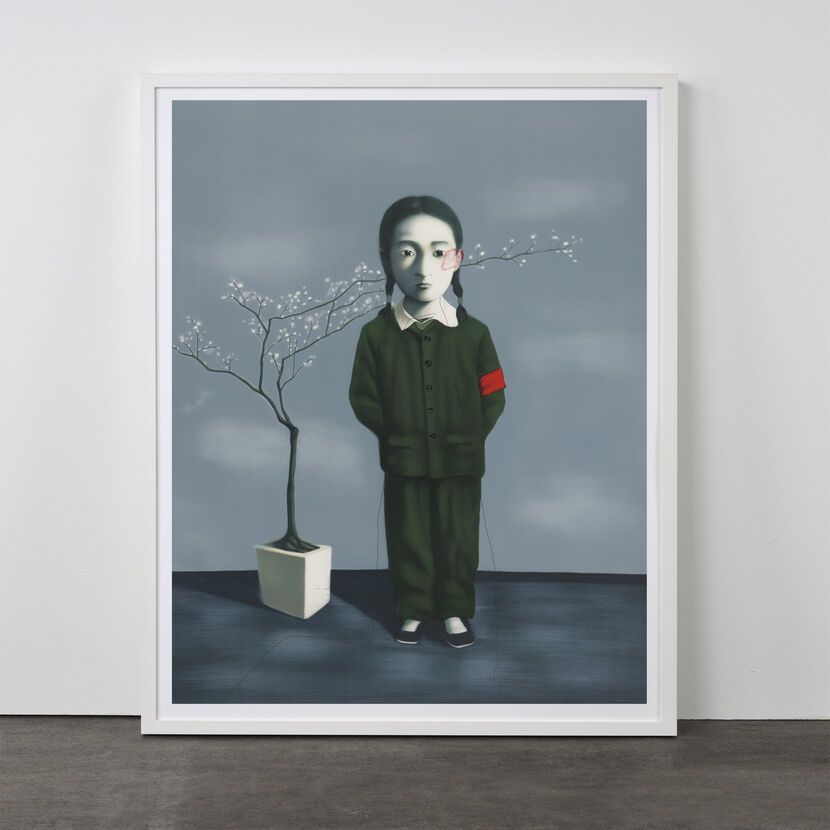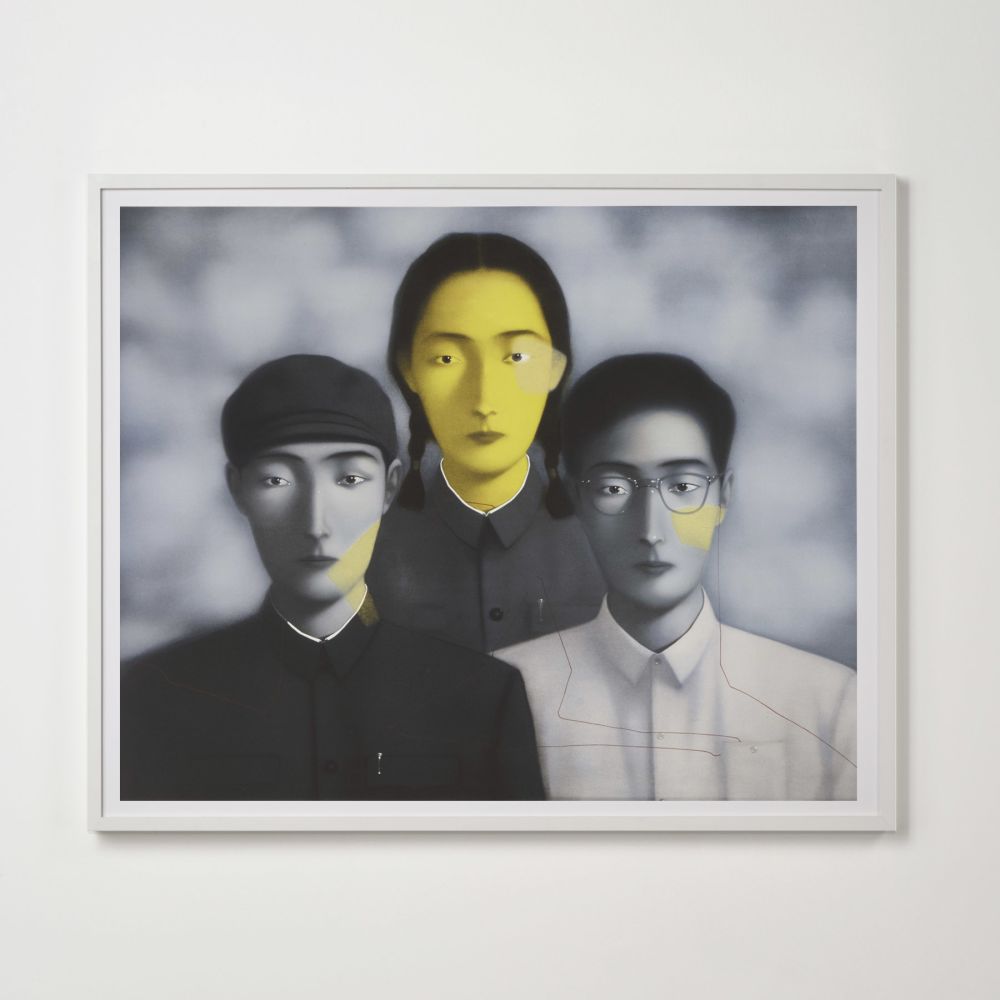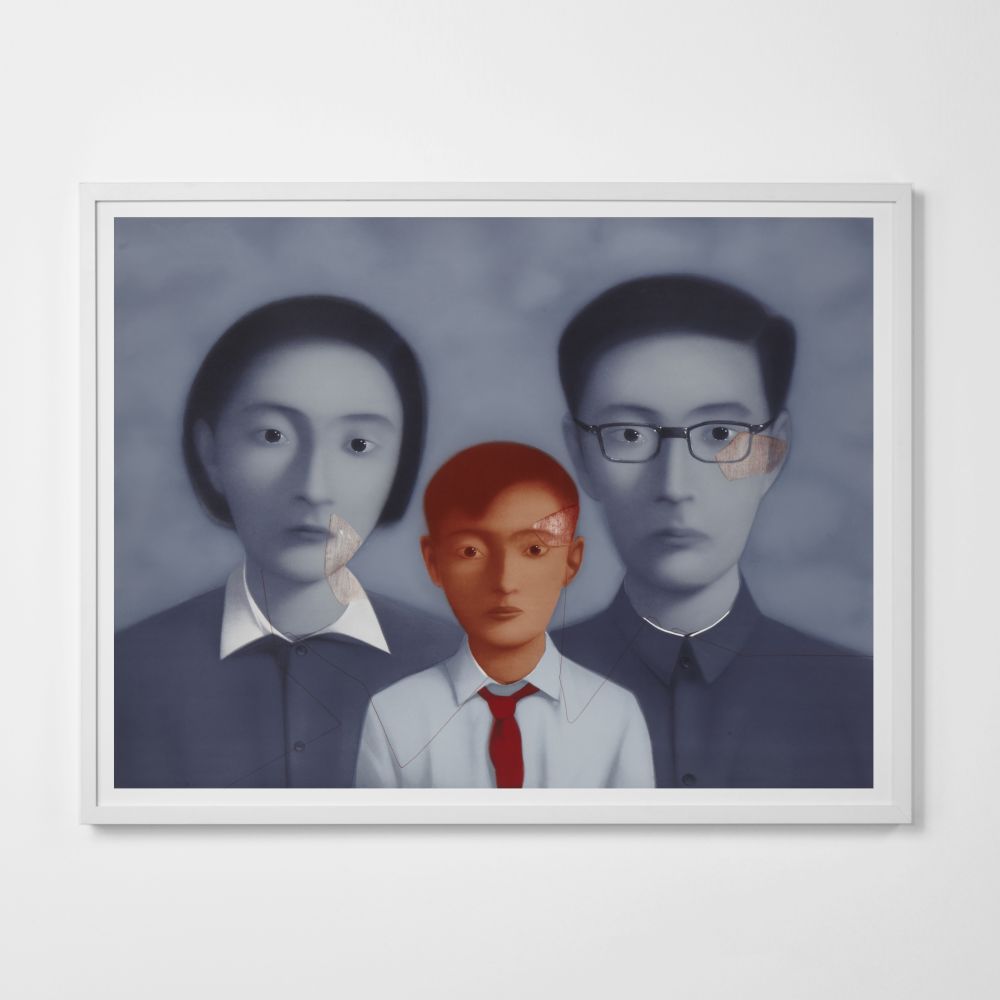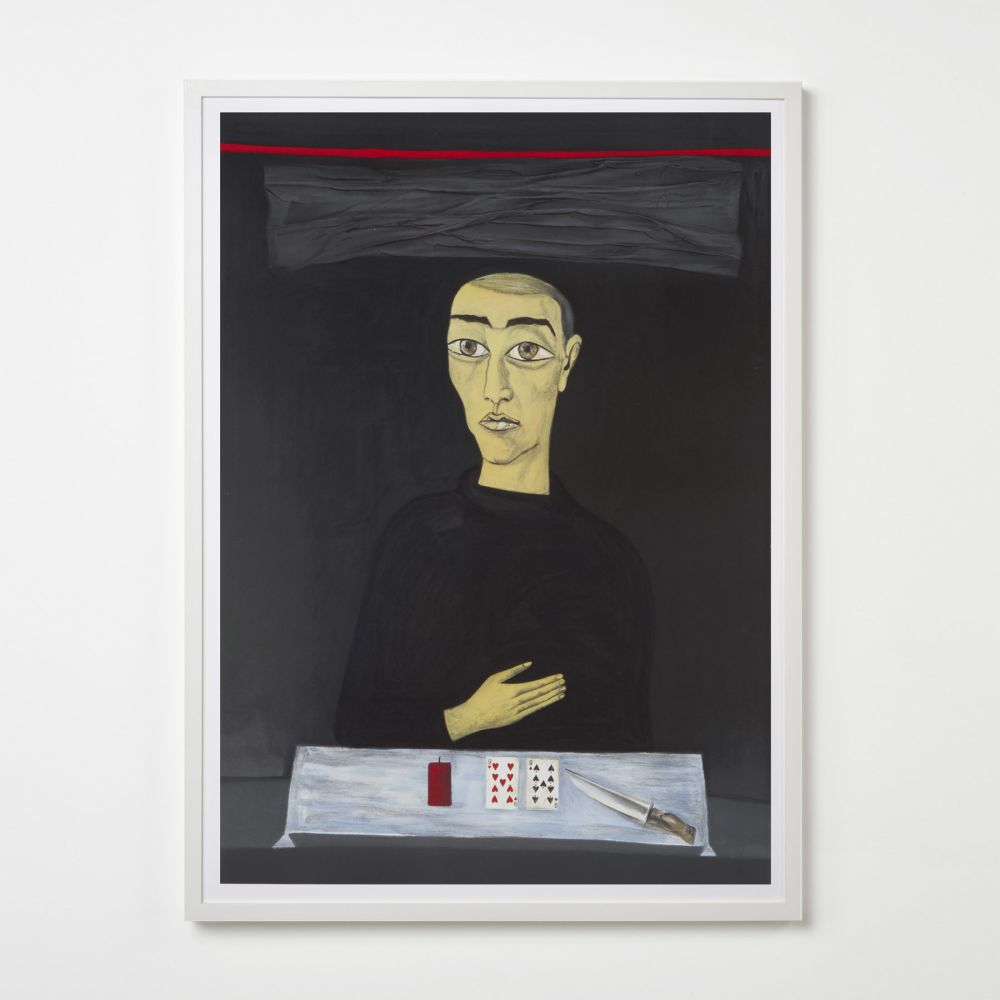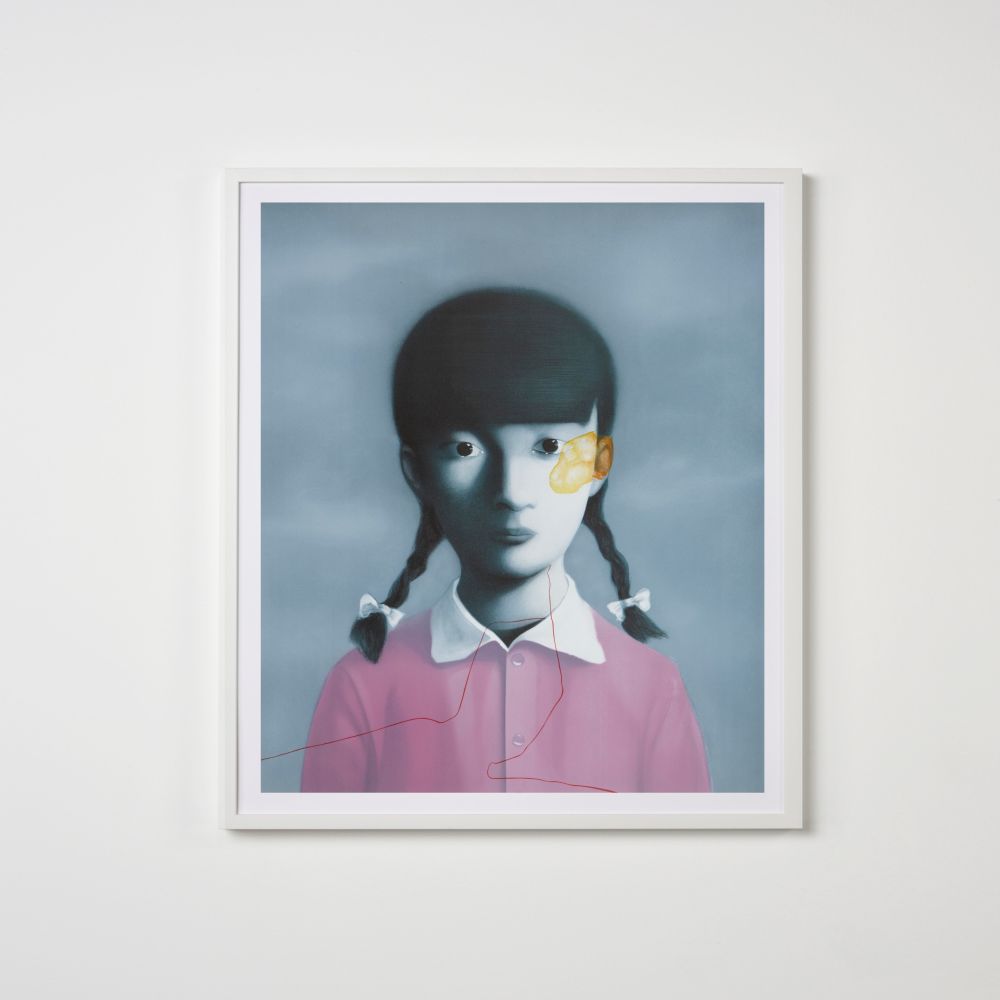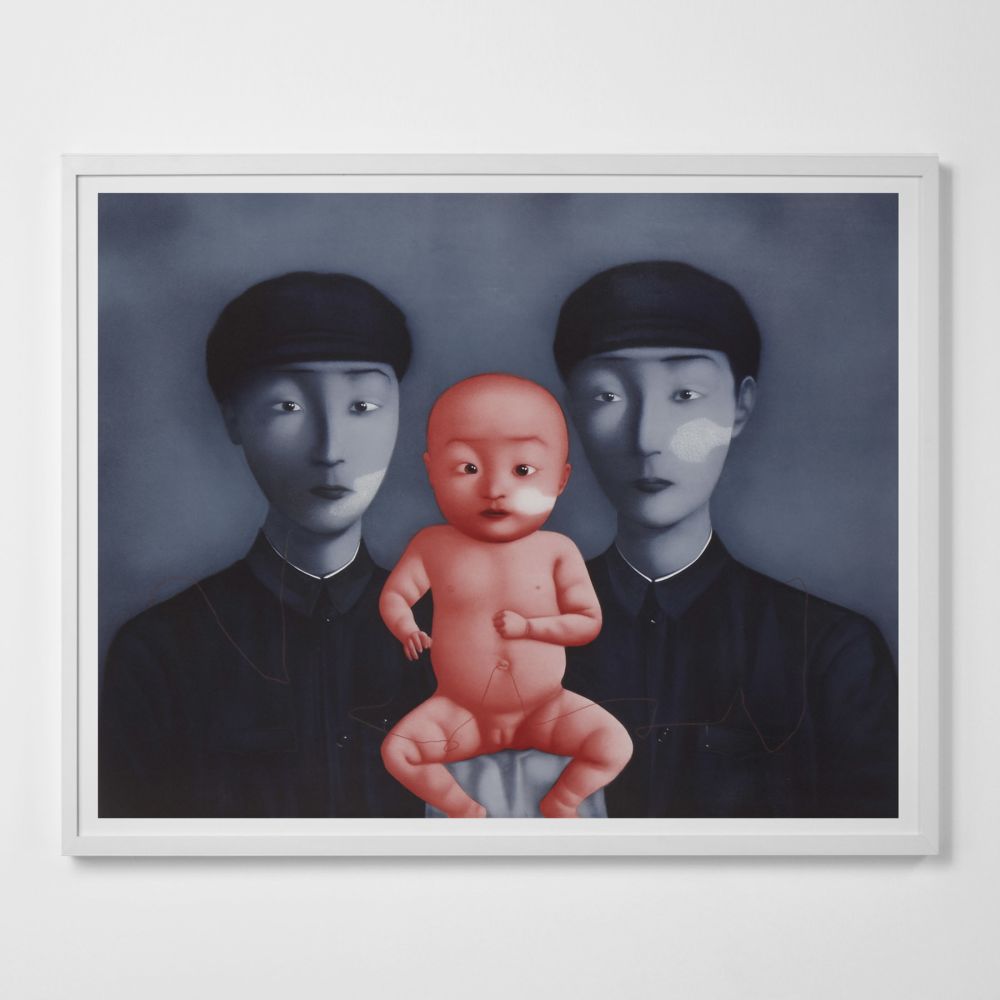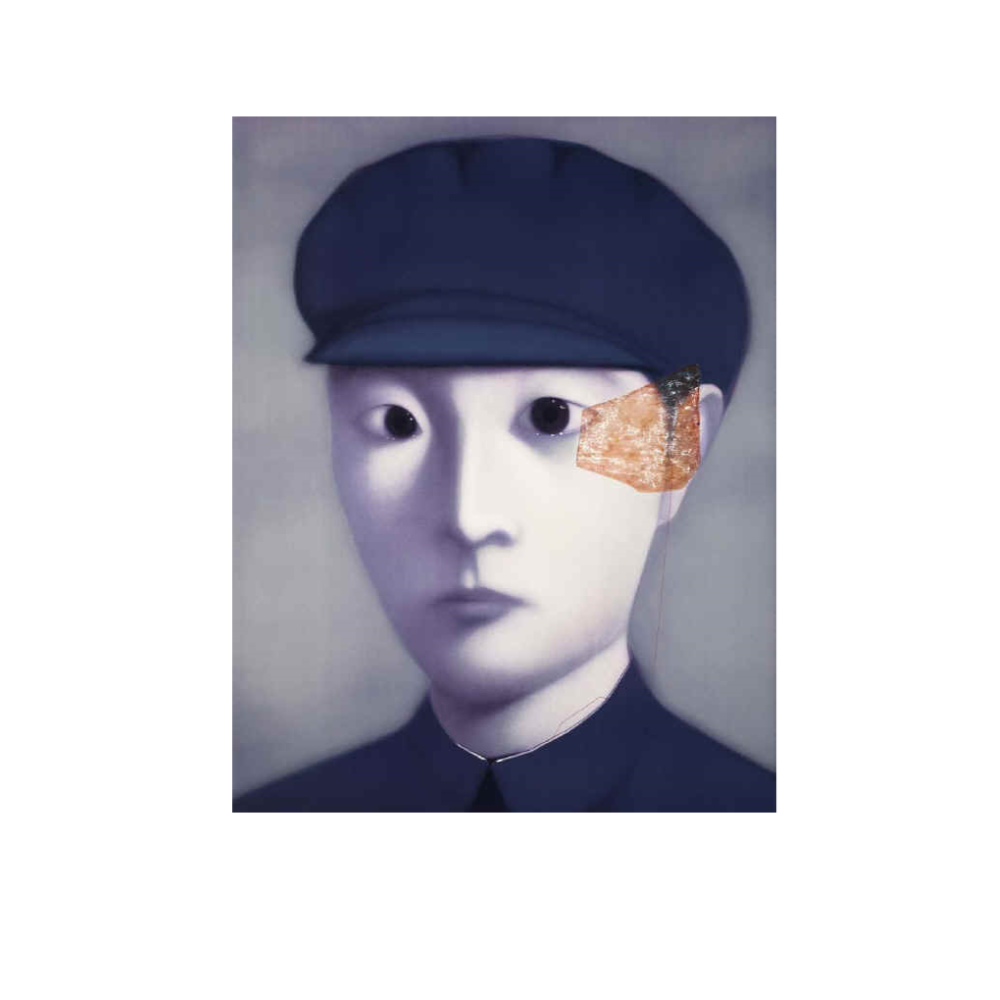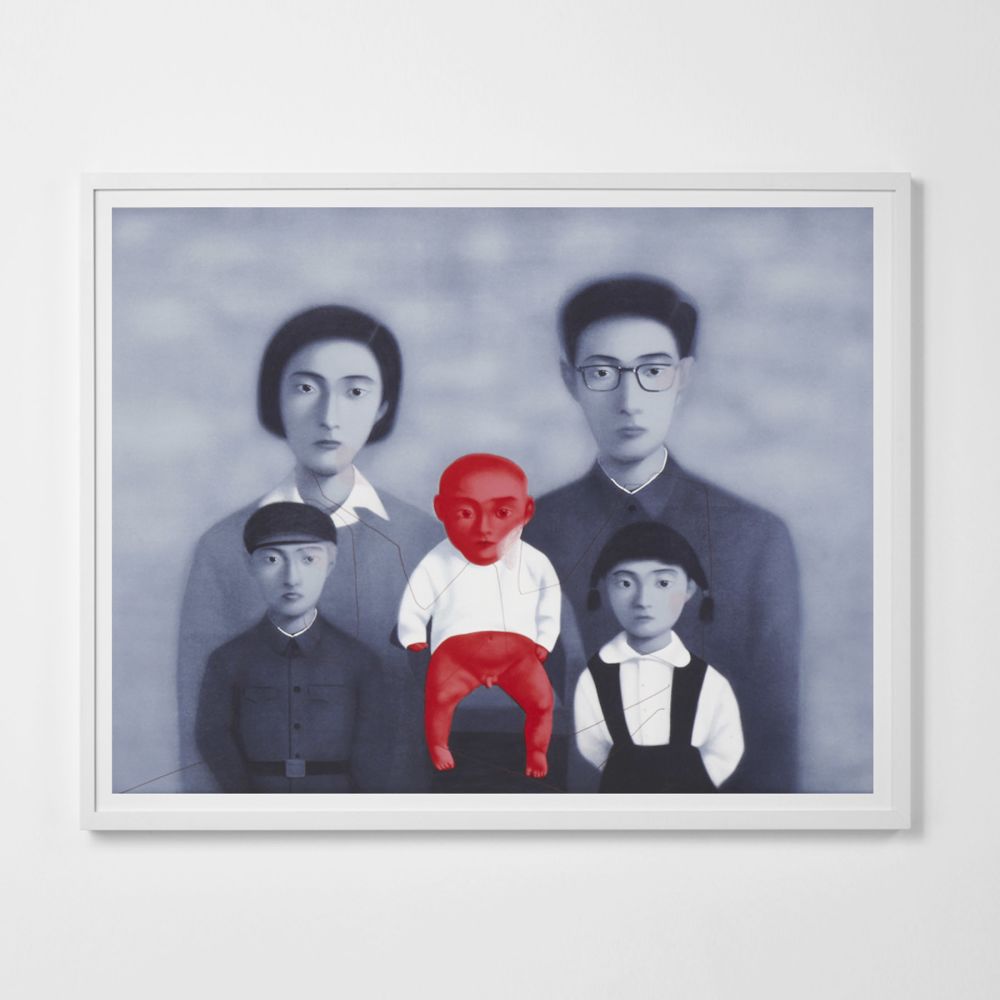Zhang Xiaogang
Zhang Xiaogang (born 1958, Kunming, China) is a Chinese symbolist and surrealist painter. He is famous with his Bloodline series, where mostly monochromatic, stylized portraits of Chinese people are presented as part of the artist's exploration of the 'family' concept. Zhang Xiaogang was trained as an oil painter at the Sichuan Academy of Fine Arts. After his graduation in 1982, he joined a group of young avant-garde artists who came to international prominence in 1980. In his earlier paintings, Xiaogang explored human values through the lens of the traditions coming from the rural Chinese culture. The artist continues to work around the multifaceted concept of 'family', the notion of identity within the Chinese culture, and collectivism. His imagery is inspired by the family photos from the Cultural Revolution period, as well as the European tradition of surrealism. Xiaogang’s portraits represent an infinite genealogies, where the sitters' appearance is almost homogenous. The colour schemes, such as black and white, translate the language of photography into paint that incorporates the aesthetics of the traditional Chinese charcoal drawing, giving the image a nostalgic quality. The occasional splashes of colour and red lines running through the paintings carry a substantial part of Xiaogang's symbolic language. The use of colour has an ambivalent purpose - while it is used to idealize the sitter, the splashes also create demarcations, reminiscent of birthmarks and aged film. Xiaogang was represented in many international exhibitions including Mao Goes Pop at the Sydney Museum of Contemporary Art in 1993, Sao Paolo Biennial in 1994, and Venice Biennial in 1995.
“ I take away most of the colour in my paintings because I want my paintings to be a memory of a person or of a scene, and not what we see with the naked eye with all this colour. [...] I add the patch of colour to make the painting look more like a dream. „

